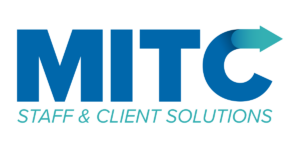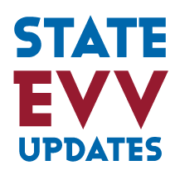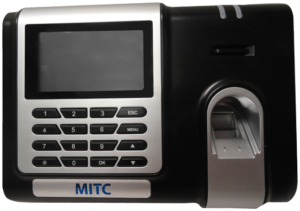When most people hear about company theft, they picture an employee smuggling monitors home or padding expense reports. Most people do not think about the often subtle act of time theft. Perpetrators may consider it a harmless way to maximize time off the clock, but it can severely hurt an organization in the long run.
What is Time Theft?
 An employee commits time theft by accepting pay for time not worked. They can do this either by working the payroll rounding rules or by fudging timesheets. For example, if Elise is paid in 15-minute increments, she could clock in 7 minutes late and clock out 7 minutes early without receiving a penalty. Employees who fill out paper timesheets have even more opportunities to record false hours.
An employee commits time theft by accepting pay for time not worked. They can do this either by working the payroll rounding rules or by fudging timesheets. For example, if Elise is paid in 15-minute increments, she could clock in 7 minutes late and clock out 7 minutes early without receiving a penalty. Employees who fill out paper timesheets have even more opportunities to record false hours.
A little stolen time, which is not a big deal, turns into a big deal over time. If Elise continues her habit of stealing 7 minutes on both ends of the day for 5 days, she will have over an hour of stolen time. In the course of a year (assuming she works 5 days a week), that adds up to about 60 hours. With a $15/hour pay rate, the total value of her stolen time will hit approximately $900. If Elise is not the only employee to do this – if perhaps 30 employees do the same thing – the stolen time value skyrockets to $27,000.
Wondering if you need to worry about time theft in your organization? Well, time theft is more widespread than you may think. The American Society of Employers estimates 20% of every dollar earned by a US company is lost to employee time theft. Furthermore, the American Payroll Association says 75% of companies lose money from buddy punching, the most widespread form of time theft.
Factors that Encourage Time Theft
Agencies can inadvertently encourage time theft in several ways. These three factors are not the only causes of time theft, but they are the most prevalent.
 Paper timesheets
Paper timesheets
Paper timesheets provide no security. It is incredibly easy for employees to write fraudulent times. Even if they do not intentionally steal time, they may not realize how much they round and how quickly it adds up.
Poor employee engagement
Unengaged employees are not interested in their work or the good of the company. If presented with the opportunity to work less without suffering wage loss, their disinterest in the company may fuel their temptation to take the opportunity.
 Poor scheduling
Poor scheduling
If an employee is overworked, has too little time between shifts to take a proper break, or is scheduled when unavailable, the employee is more likely to show up late for work or take extended breaks. This type of time theft is not always malicious – overtired employees may just have a hard time staying on schedule.
How to Prevent Time Theft
If you realize that your agency enables time theft, you can take several simple steps to reverse the error.
 Biometrics
Biometrics
Biometric devices, such as fingerprint readers, eliminate all kinds of fraud. Buddy punching is impossible, unless someone has detachable fingers, and so is lying since biometrics record the exact punch time. Fingerprint readers can also operate without an internet connection, so employees cannot make excuses about poor connectivity for missing an attendance record.
 Management alerts
Management alerts
Automated alerts help managers detect time theft at the earliest signs. An effective time and attendance solution will notify managers when an employee clocks in late, clocks out early, or takes too long of a break. Since a few of these instances are permissible, an effective solution will also run reports on attendance records over time so managers can see whether certain employees have more offenses than others.
Engagement efforts
Re-engaging disinterested employees will do wonders for time and attendance compliance. If you suspect time theft in your agency, provide contexts to evaluate employee engagement. Maybe your employees don’t understand the larger purpose of their work, so they are looking for ways to get out early. Or maybe they don’t have enough paid time off, so they feel burnt out. The results of an employee engagement survey might reveal the underlying reasons for time theft at your agency.
Effective scheduling

A scheduling solution should have more functionality than pen and paper. It should filter available employees by availability, preferences, and hours so managers don’t overload one person while another begs for more work. Good scheduling software will also ensure employees have enough break time between shifts and sufficient travel time between locations.
Conclusion
Time theft is a nearly-invisible cost on your agency’s payroll that can hinder organizational growth and employee morale. But solutions do exist to help your agency spot time theft and stop it at the source. A productivity increase of 20% is worth the effort!

 2018 MITC
2018 MITC 2018 MITC
2018 MITC




 2018 MITC
2018 MITC
 2018 MITC
2018 MITC 2018 MITC
2018 MITC 2018 MITC
2018 MITC 2018 MITC
2018 MITC 2018 MITC
2018 MITC  An employee commits time theft by accepting pay for time not worked. They can do this either by working the payroll rounding rules or by fudging timesheets. For example, if Elise is paid in 15-minute increments, she could clock in 7 minutes late and clock out 7 minutes early without receiving a penalty. Employees who fill out paper timesheets have even more opportunities to record false hours.
An employee commits time theft by accepting pay for time not worked. They can do this either by working the payroll rounding rules or by fudging timesheets. For example, if Elise is paid in 15-minute increments, she could clock in 7 minutes late and clock out 7 minutes early without receiving a penalty. Employees who fill out paper timesheets have even more opportunities to record false hours. Paper timesheets
Paper timesheets Poor scheduling
Poor scheduling  Biometrics
Biometrics Management alerts
Management alerts